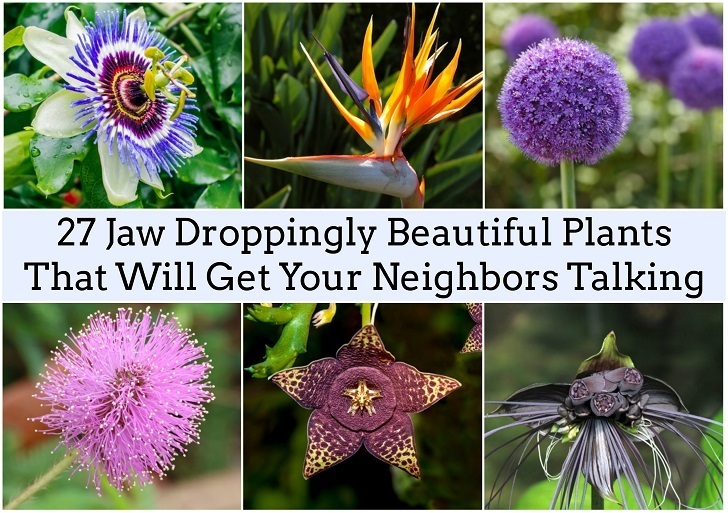
While delicate flowers and lush green foliage make for a pretty garden, some growers strive to cultivate something a little different – whether it be a truly unique outdoor space, a way to transport themselves to another world, or an interesting conversation starter.
If you’re looking to grow something other than a bed of perfect roses, consider these 27 peculiar plants and fascinating flowers.
1. African Starfish Flowers
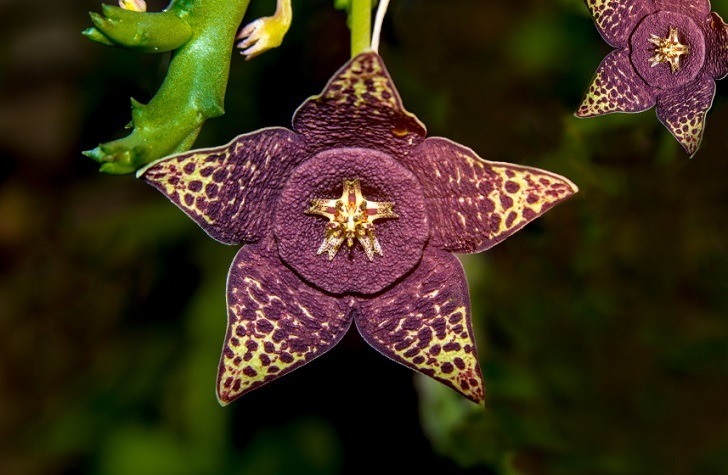
These soft-stemmed members of the succulent family produce amazing red five-petaled flowers that are sure to attract attention. Be warned though, their odor is quite unpleasant, although it serves to draw in a variety of insects!
As this plant species is native to South Africa, growing Starfish Flowers requires warm, humid temperatures or a specialized greenhouse.
2. Birds of Paradise
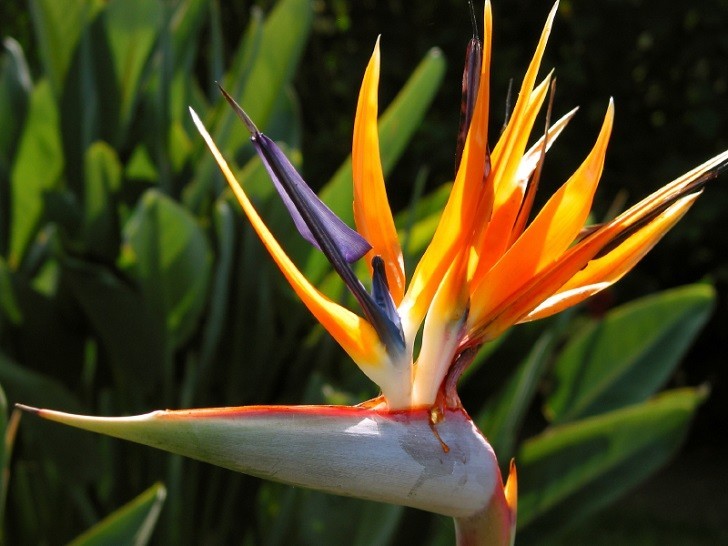
Resembling the head and neck of a brightly colored bird in flight, the Birds of Paradise flower is a spectacular plant that instantly inspires a tropical feeling in any garden or home.
They don’t do well in temperatures below 50 degrees, need plenty of sunlight and enjoy moist soil during Spring and Summer. To ensure they bloom regularly, keep your Birds of Paradise lightly supported in pots and vases.
Get your Birds Of Paradise flower seeds here.
3. Black Bat Flower
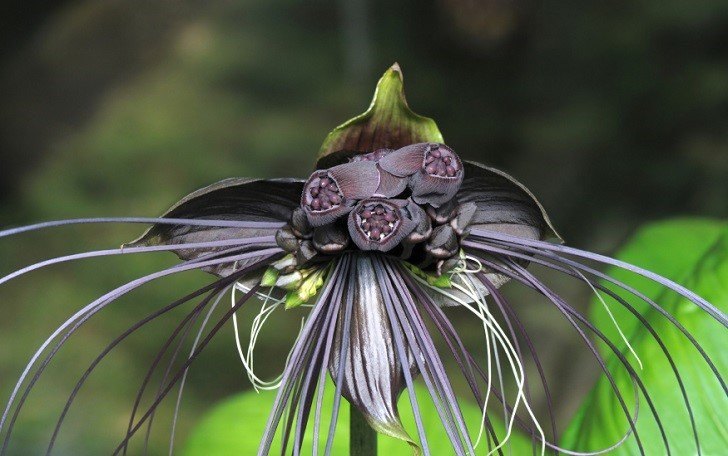
This eerie flower belongs to the yam family although it’s not likely to resemble any yam you have seen before! The dark purple to black flowers are bat-shaped and have long whiskers that can grow up to 28 inches in length.
The plant can bloom eight times per season and produce up to 12 flower stems during that period. Because Black Bat Flowers are native to Southeast Asia, they grow best in shady areas and well-drained soil, and prefer high humidity and lots of water.
Get your Black Bat Flower seeds here.
4. Bleeding Hearts
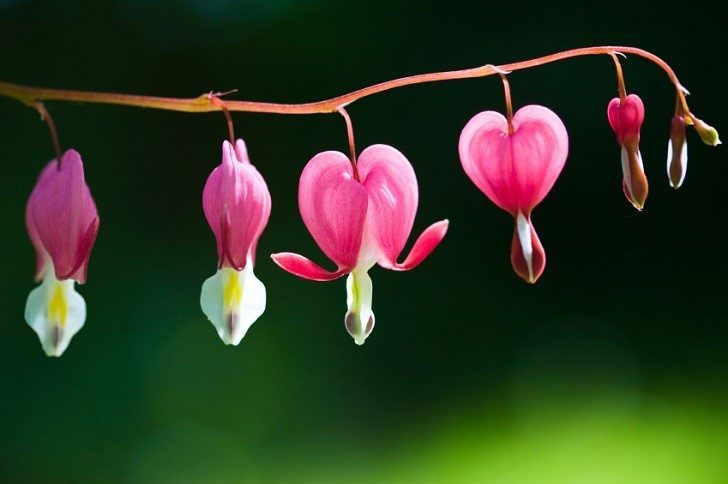
A species of flowering plant in the poppy family, the Bleeding Heart – or Asian Bleeding Heart as it is known – is native to Siberia, northern China, Korea and Japan.
It will bring a delicate and feminine feel to any garden, thanks to its heart-shaped pink and white flowers which bloom in Spring. Bleeding Heart grows best in cool, moist conditions with light to medium shade and well-drained soil.
Get your Bleeding Heart flower seeds here.
5. Blue Honeywort
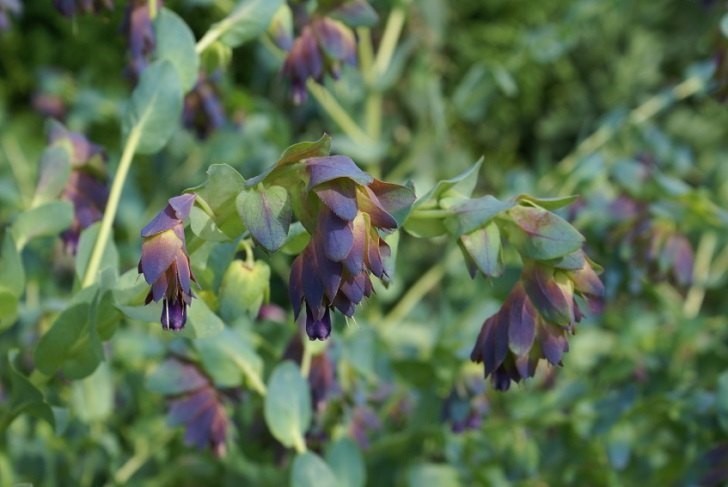
Also known as the Blue Shrimp Plant, the Honeywort has fascinating inch-long tubular flowers framed by large, hearted petals and green-gray foliage. Hummingbirds and bees just love it!
This self-seeding plant – which is native to the Mediterranean region – will deposit its square black seeds around the garden meaning you can enjoy its unconventional beauty for years to come. Plant it in full sun and dry soil for best results.
Get your Blue Honeywort flower seeds here.
6. Blue Passionflower
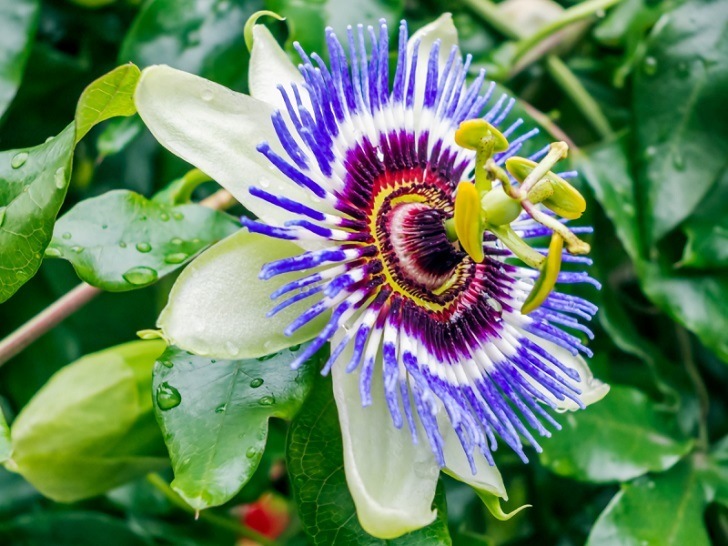
An incredible looking flower, the hardy Blue Passionflower boasts multi-colored petals with a minty scent. The plant produces tasty orange fruits with a deep red, edible flesh – although its cousin the purple passion fruit is still more popular.
Blue Passionflower thrives in warm climates although it is hardy to 10 degrees F. In areas without much frost, this extremely fast-growing vine will grow and bloom throughout the year.
Get your Blue Passionflower seeds here.
7. Broccoli Romanesco
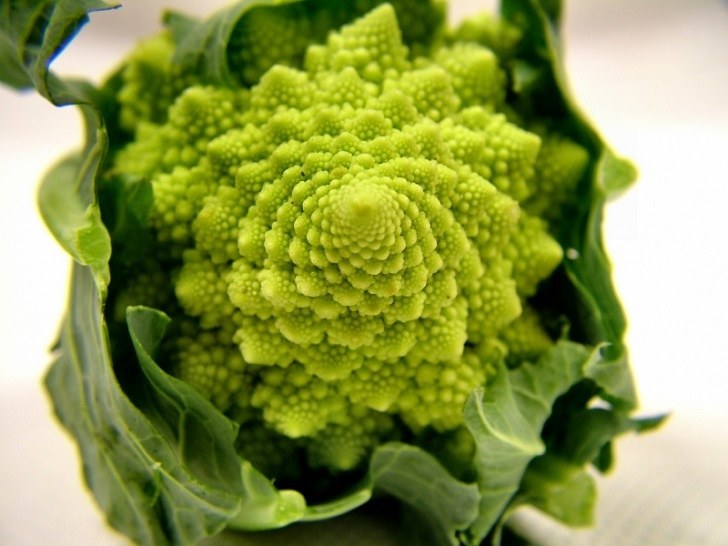
This psychedelic plant, also known as Roman Cauliflower, is sure to liven up your vegetable garden with its vibrant chartreuse color and strange, alien-like shape. As it tastes similar to cauliflower, but with a slightly nuttier, earthier flavor, it can be used in place of broccoli or cauliflower in many recipes.
Broccoli Romanesco is a cool season plant that needs well drained soil in full sun, along with regular watering and weeding.
Get your Broccoli Romanesco seeds here.
8. Fernleaf Fiddleneck
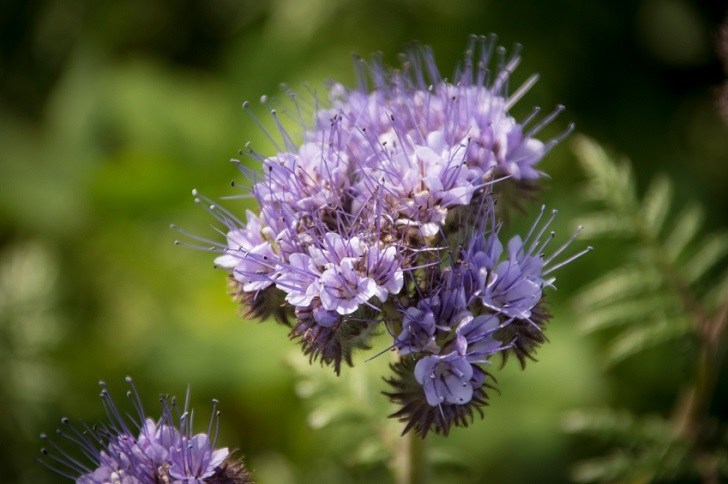
The rare purple Fernleaf Fiddleneck is used in European and Californian vineyards as a cover crop. But it also makes for a fascinating and beautifully decorative plant which attracts honey bees and a wide range of other beneficial pollinators.
The Fernleaf Fiddleneck grows up to five feet tall and boasts a pretty, lacy lavender foliage with white clusters of bell-shaped blooms that curve gracefully. Get your fernleaf Fiddleneck seeds here.
9. Globe Thistles
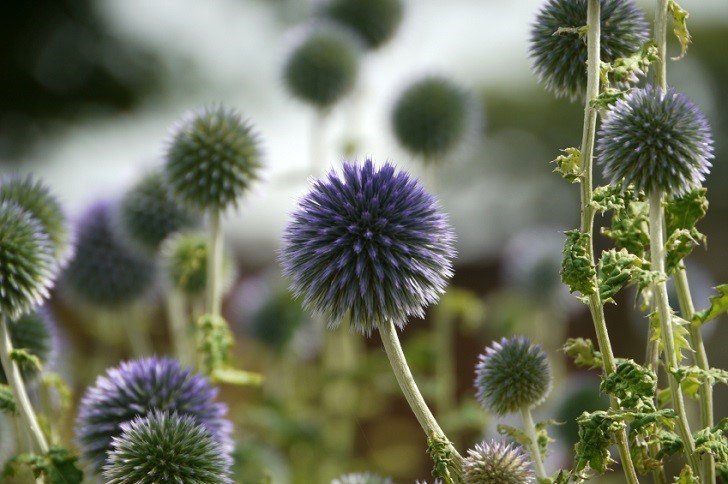
The Globe Thistle is a tall, purple-blue plant with spherical flower heads and spiny, prickly leaves. Not only do these blooms attract butterflies and bees, they command the attention of anyone who passes them.
They grow well in hot, dry climates, full sunlight, and well-drained soil.
10. Goat’s Beard

You’ll feel like you’re in a giant’s garden when you see a Goat’s Beard flower – a super-sized version of the humble dandelion! Much like the common garden dandelion, the petals of this flower are yellow, and then gradually transform into a seed-clock.
Unlike the dandelion, these flowers grow to 30 inches tall and, when the seed-clock is fully open, it measures three inches in diameter!
If yellow isn’t your color, then opt for the mauve-colored Salsify which is from the same genus. Get
11. Hoya Plants
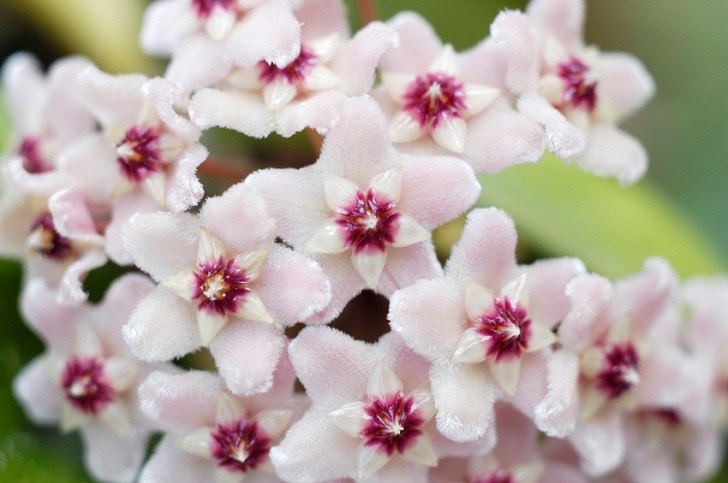
The eye-catching yet low-maintenance Hoya plant produces clusters of stunning, delicate flowers which have stars in their crowns and a waxy or porcelain feel. In fact, these plants are so geometrically perfect that they can often look artificial!
Native to tropic and subtropical regions, the Hoya plants do well indoors, in protected areas or in a greenhouse. They like warmth, sunlight and moist, well-drained soil. Get your Hoya seeds here.
12. Japanese Shield Fern
Image Credit: Phyteclub.org
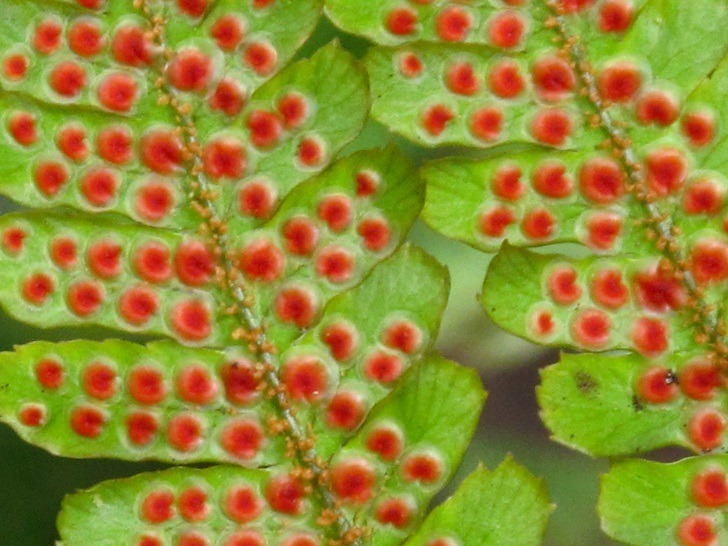
While ferns aren’t the most exciting plants around, the Japanese Shield Fern is a little different from the norm. The undersides of the fronds are frequently covered in blood red spores – reminiscent of droplets of red blood on shields! These spores are an important part of the reproductive cycle of the plant.
These semi-evergreen plants grow in light woodland shade on low mountains or hills. Their fronds have a coppery tint when young, but mature to dark green.
13. Korchia Balls
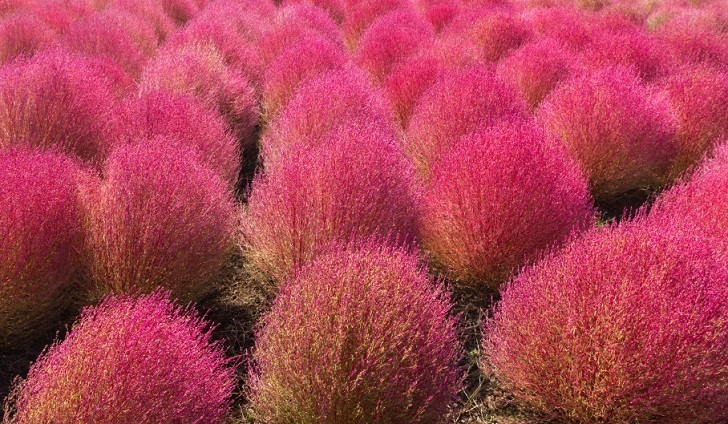
These amazing bush plants come in both bright green and hot pink – making them look like they are on fire!
The hairy flowers of this hardy annual bloom in summer, and the plants can grow to 36 inches in height. Place Korchia Balls in full sunlight, and average soil.
14. Mouse Melons
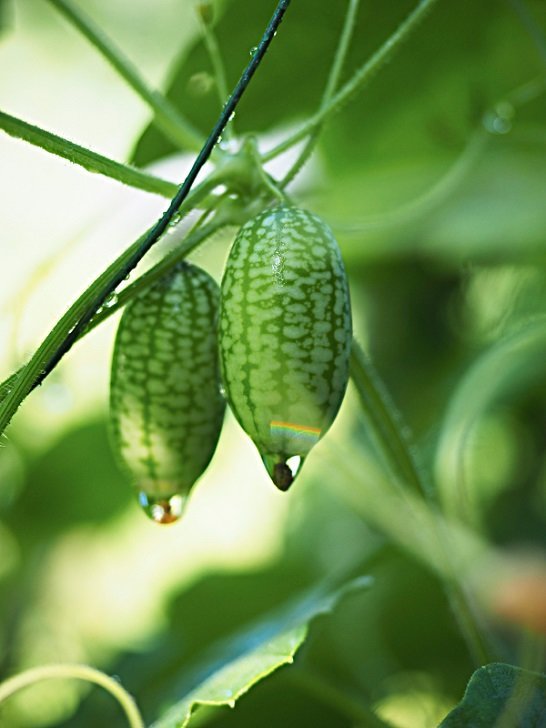
Mouse Melons are central American delicacies the size of grapes. They look like mini watermelons yet taste of cucumbers and lime!
Also known as Mexican Sour Gherkins, Cucamelons, Mexican Miniature Watermelons and Mexican Sour Cucumbers, these plants don’t attract any pests, are resistant to drought and are easily grown outdoors.
Add them to salads and salsas or pickle them for a healthy treat. Get your Cucamelons seeds here.
15. Naked Man Orchids
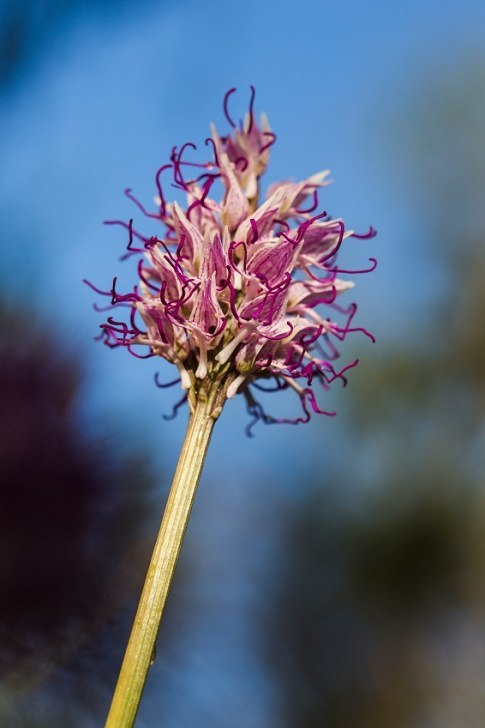
The Italian Orchid is commonly known as the Naked Man Orchid because its petals look like anatomically correct men! It’s also one of the reasons why these unusual Spring blooms are so popular!
The bright pink flowers of these orchids are commonly found in the Mediterranean in large clusters. You can grow them in your garden in partial shade and in low nutrient soil, where they may grow up to 20 inches in height.
Get your Italian Orchid seeds here.
16. Ornamental Allium Flowers
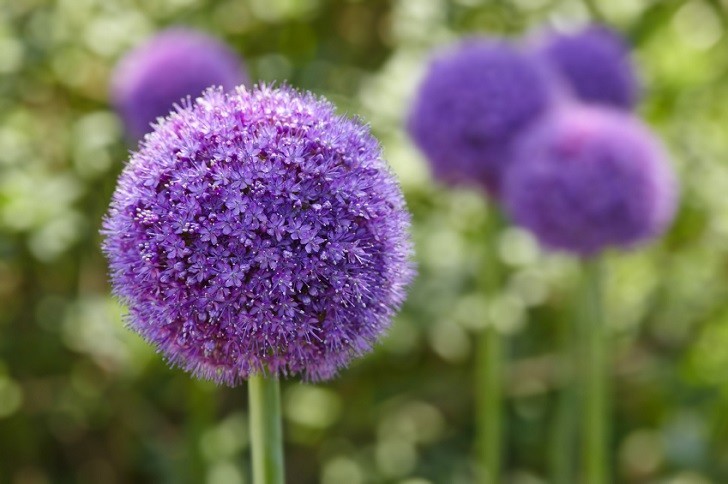
It’s hard to believe that these easy-to-grow blooms, which come in a broad range of colors, are related to humble onions and garlic.
Ornamental Alliums are hardy and undemanding – although they should be grown in a sunlit area. They are not fussy about soil type, as long as it is well-drained.
Some of the weirdest Ornamental Alliums are the ‘Everlasting’ variety and the ‘Schubert’ alliums which resemble exploding fireworks! Get your Ornamental Allium seeds here.
17. Parrot Tulips
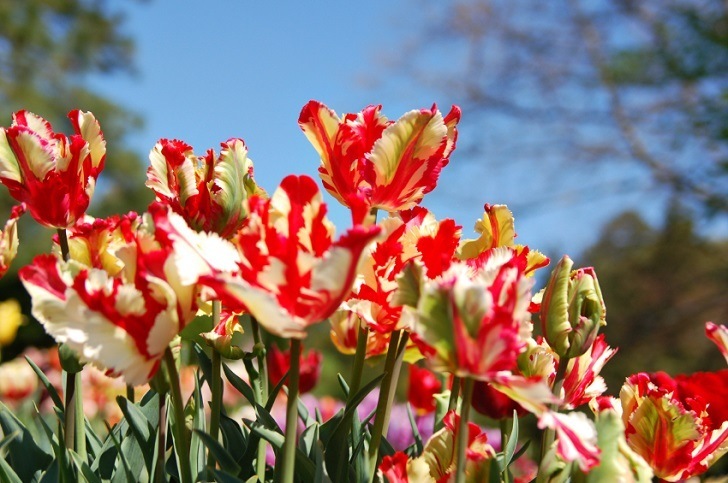
Just like the Birds of Paradise flowers, the dramatic Parrot Tulips exude a tropical feel. Their large petals are feathered, curled and brightly colored giving rise to their name.
Developed by crossing certain varieties of tulip, some Parrot Tulips flower in late Spring while others bloom in mid-Spring. You can choose from flamboyant colors such as white, pink, apricot, yellow, orange, red and purple. Get your Parrot Tulips here.
18. Prickly Caterpillar Beans
Image Credit: en.wikipedia.org
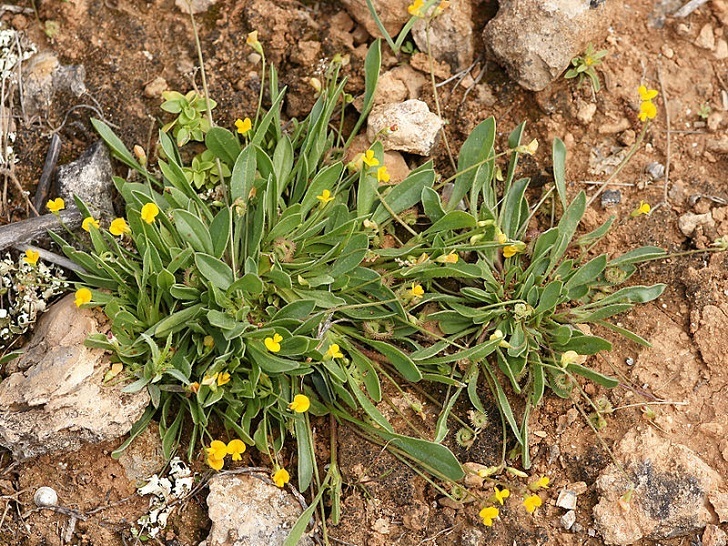
Also known as the Caterpillar Plant or Prickly Scorpion’s Tail, the Prickly Caterpillar Beans are an annual plant native to southern Europe. They have tiny pea-like flowers with coiled, hairy pods.
While they are a type of legume, these Prickly Caterpillar Beans are rarely eaten. Instead, they are favored as groundcover in the garden.
19. Purple Triple Datura
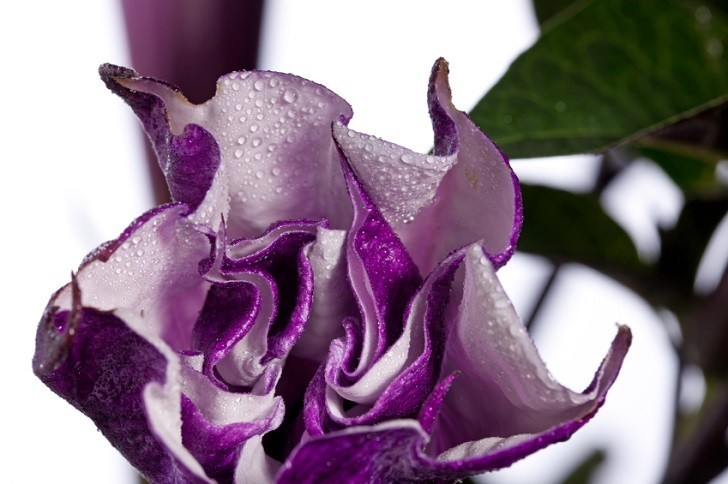
These desert plants have furry leaves, deep purple stems, and ruffled white and lilac blooms. Just like the evening Primrose plant, their fragrant blossoms open only at night.
The Purple Triple Datura is an annual plant which will thrive in poor soil and little water, although they prefer warmer climates.
20. Sensitive Plant (Mimosa Pudica)
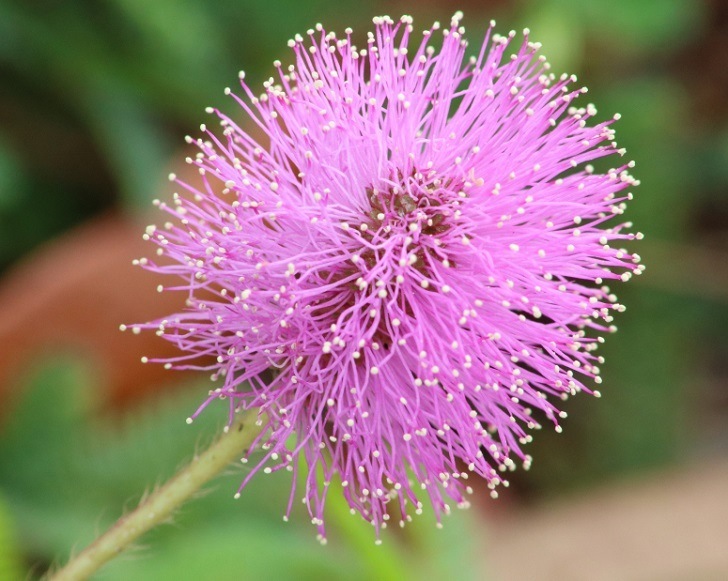
Shy, sleepy and sensitive are just some of the words used to describe this unusual plant. While it’s by no means the strangest looking specimen on this list, it has a unique ‘personality’ and is often grown for its curiosity value! When touched, the leaves of the Sensitive Plant fold inward and droop. When they have been left alone for a few minutes, they happily re-open again.
A native of South America, these plants thrive in warm and bright areas. Ge your Sensitive Plant seeds here.
21. Sunzilla Sunflowers
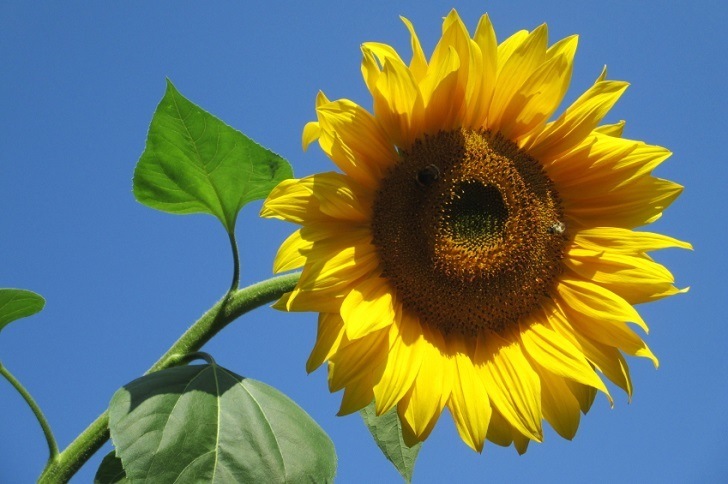
Not your regular sunflower, the Sunzilla is the tallest sunflower on the market – which can grow up to an astonishing 16 feet tall! The flowers are huge with diameters of a foot across or more.
A couple of these in your garden will provide you with a huge bounty – enough sunflower seeds for you and your garden birds. Of course, sunflowers need plenty of sun, compost, organic fertilizer and moist soil.
Get your Sunflower seeds here.
22. Venus Fly Trap
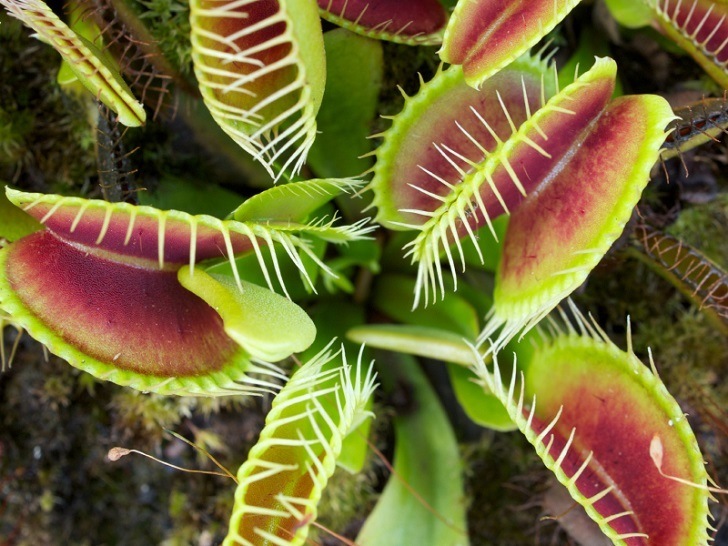
Immortalized in the 1986 movie Little Shop of Horrors, the Venus Fly Trap is a carnivorous plant native to the subtropical wetlands of the East Coast of the USA.
Its leaves have short, stiff hairs called trigger hairs. When stimulated – like by an unsuspecting bug – the two lobes of the leaf snap shut, trapping the insect inside. Get your Venus Fly Trap here.
23. Voodoo Lily
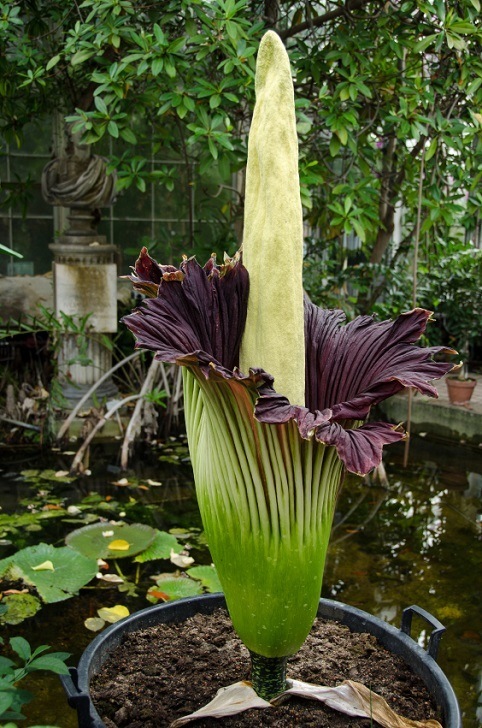
Voodoo lilies, also called Devil’s Tongue, are grown for their huge flowers and unusual foliage – they can grow up to 6 feet tall. While it’s a striking garden feature, the blossoms produce an odor similar to that of rotting meat, although they only last a day or two. Nevertheless, if you choose to cultivate this ominous flower, make sure to plant it well away from your home!
Established lilies need little attention, only requiring watering during prolonged dry spells. Get your Voodoo lily seeds here.
24. Watermelon Radish
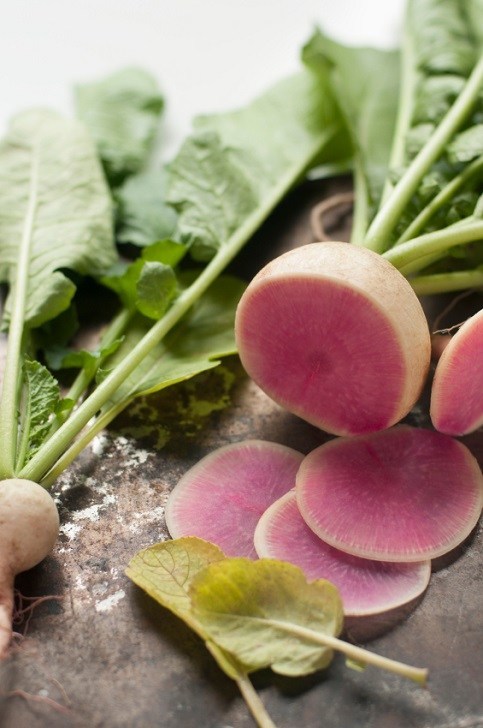
Although these radishes don’t look like anything special on the exterior, once you cut them open their magic is exposed! You’ll be met with a stunning fuchsia or vibrant orange interior which will liven up any dinner plate.
Roast these radishes, toss them into a crisp summer salad or lacto-ferment them for good gut health. Get your Watermelon Radish seeds here.
25. Weeping Larch
This weeping plant has soft summer foliage and a cascading shape – it may even remind you of a lime green version of Cousin Itt from the Addams Family.
The Weeping Larch can grow to 12 inches in height and 10 inches in width, and will boast golden yellow needles and decorative cones in Fall. The needles are shed in winter temperatures. Weeping Larch plants grow best in the cooler summer temperatures of northern latitudes.
26. White Strawberries
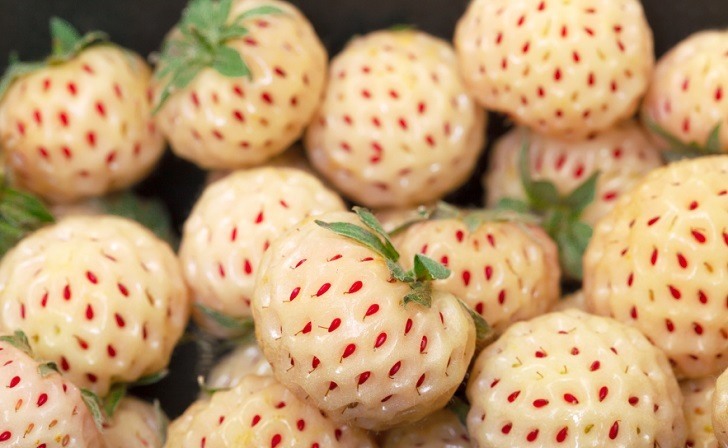
When we think of strawberries, we tend to think of the juicy, mouth-watering red variety. But it turns out there are several types of white strawberries too!
Two of these – the Alpine and the Beach – are true white strawberries that can grow in the wild, in the garden or in containers. Not only are these anemic berries an interesting conversation starter when you have guests over, but better still, it’s likely that people who are allergic to red strawberries can tolerate the white version, as they are missing the pigment that causes the allergy (although medical supervision is recommended). Get your White Strawberry seeds here.
27. Wild Maypop
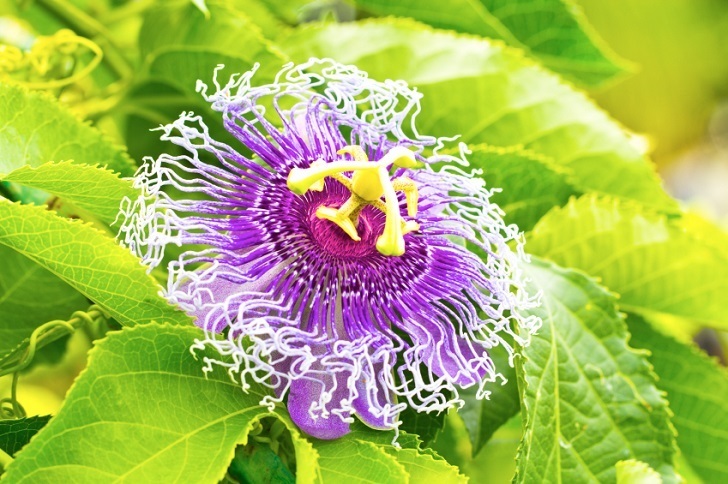
The Maypop, Purple Passionflower, True Passionflower or Wild Apricot as it is also known, is a fast-growing vine with climbing or trailing stems. Its exotic looking flowers have a layer of purple petals underneath a fringe of wavy, hair-like segments.
It flowers from summer to autumn and does well in full sun or dappled shade. Get your Purple Passionflower seeds here.
